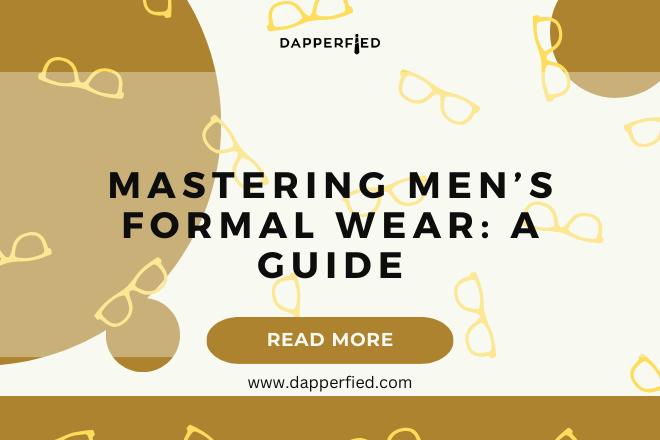
Men's Style
Mastering Men’s Suiting: Essential Tips
Men’s suiting has a long and rich history that dates back centuries. The modern suit as we know it today can be traced back to the early 19th century, when Beau Brummell, a British dandy, popularized the idea of a tailored suit for men. Prior to this, men’s clothing was often loose-fitting and lacked the structure and refinement that we associate with suits today.
The importance of a well-fitted suit cannot be overstated. A suit that fits properly not only looks better but also feels better. It enhances a man’s silhouette, accentuates his best features, and exudes confidence and professionalism. Whether it’s for a job interview, a wedding, or any other formal occasion, a well-fitted suit is a must-have in every man’s wardrobe.
Key Takeaways
- Choose a suit that fits well and flatters your body type
- Understand the different suit styles and choose one that suits the occasion
- Tailored suits offer the best fit and customization options
- Pay attention to fit and accessorize with ties and pocket squares
- Proper care and maintenance will extend the life of your suit and keep it looking sharp
Suit Selection Tips for Men
Choosing the right fabric is crucial when selecting a suit. Different fabrics have different characteristics and can greatly affect the overall look and feel of the suit. Wool is the most common fabric used for suits due to its durability, breathability, and ability to drape well. Other popular options include cotton, linen, and silk blends, each with their own unique properties.
When it comes to color and pattern, it’s important to consider both personal style and the occasion. Classic colors like navy blue, charcoal gray, and black are versatile and appropriate for most occasions. However, lighter shades like light gray or tan can be great for summer events. As for patterns, solid colors are timeless and versatile, while pinstripes or checks can add some personality to the suit.
The occasion and dress code should also be taken into account when selecting a suit. For formal events like weddings or black-tie affairs, a dark-colored suit with a matching jacket and trousers is usually required. For more casual occasions or business settings, a lighter-colored suit or even a blazer and trousers combination may be more appropriate.
Understanding Men’s Suiting Styles
There are various styles of suits to choose from, each with its own unique characteristics. Classic styles, such as the two-button single-breasted suit, are timeless and versatile. They are suitable for most occasions and can be easily dressed up or down. On the other hand, modern styles, like the slim-fit suit, have a more streamlined silhouette and are popular among younger men.
The choice between single-breasted and double-breasted suits is largely a matter of personal preference. Single-breasted suits are more common and versatile, while double-breasted suits have a more formal and traditional look. Double-breasted suits typically have peak lapels, which add a touch of elegance and sophistication.
Lapel styles also play a role in the overall look of a suit. Notch lapels are the most common and versatile, while peak lapels are more formal and sophisticated. Shawl lapels, on the other hand, are typically found on tuxedos and have a more vintage-inspired look.
Tailored Suit Guide for Men
| Metrics | Values |
|---|---|
| Number of pages | 10 |
| Number of words | 5,000 |
| Number of images | 15 |
| Number of videos | 0 |
| Number of sections | 5 |
| Number of sub-sections | 20 |
| Number of tips | 50 |
| Number of recommended brands | 5 |
While off-the-rack suits can be convenient and affordable, there is no substitute for a tailored suit. A tailored suit is made specifically for your body measurements, ensuring a perfect fit and flattering silhouette. It allows you to customize every aspect of the suit, from the fabric to the buttons to the lapel style.
Finding a good tailor is essential when getting a suit tailored. Ask for recommendations from friends or family members who have had positive experiences with tailors in your area. Look for someone who has experience working with men’s suits and has a good understanding of fit and construction.
The tailoring process typically involves multiple fittings to ensure that the suit fits perfectly. The tailor will take your measurements and make adjustments to the suit accordingly. This may include taking in or letting out the waist, shortening or lengthening the sleeves, and adjusting the trouser length. The end result is a suit that fits like a glove and flatters your body shape.
Suit Buying Tips for Men
When buying a suit, it’s important to set a budget and stick to it. Suits can vary greatly in price, depending on factors such as the brand, fabric, and construction. Determine how much you are willing to spend and look for suits within your price range.
Timing is also important when shopping for a suit. Many retailers offer sales and discounts throughout the year, so it’s worth keeping an eye out for these opportunities. Additionally, shopping during the off-season can often result in better deals.
Trying on multiple sizes and styles is crucial when buying a suit. Sizes can vary between brands, so it’s important to try on different sizes to find the best fit. It’s also worth experimenting with different styles to see what suits your body shape and personal style.
Men’s Formal Wear: Dressing for Special Occasions


When it comes to dressing for special occasions, such as black tie events or weddings, it’s important to understand the dress code and adhere to it. Black tie events typically require a tuxedo or a dark-colored suit with a bow tie, while white tie events call for a tailcoat and white bow tie.
For weddings and other formal events, it’s important to consider the theme and location. If the wedding is taking place outdoors in the summer, a lighter-colored suit or even a linen suit may be more appropriate. If the event has a specific theme, such as a vintage-inspired wedding, you can incorporate elements of that theme into your outfit.
Adding personal touches to formal wear can help you stand out from the crowd. Consider adding a pocket square or boutonniere to your suit jacket for a touch of elegance. You can also experiment with different tie knots or even opt for a bow tie instead of a traditional necktie.
The Importance of Fit in Men’s Suiting
Fit is perhaps the most important aspect of men’s suiting. A well-fitted suit should hug the body without being too tight or too loose. The jacket should sit comfortably on the shoulders, with the sleeves ending at the wrist bone. The trousers should sit at the natural waist and break slightly on top of the shoes.
Common fit issues include a jacket that is too tight or too loose, trousers that are too long or too short, and sleeves that are too long or too short. These issues can be easily fixed by a tailor through alterations. It’s important to remember that a suit off the rack will rarely fit perfectly, so alterations are often necessary to achieve the desired fit.
Accessorizing Men’s Suits: Ties, Pocket Squares, and More
Accessories play an important role in completing a suit ensemble. The tie is perhaps the most important accessory and should be chosen carefully to complement the suit. Solid-colored ties are versatile and timeless, while patterned ties can add some personality to the outfit. Consider the occasion and dress code when selecting a tie.
Adding a pocket square or boutonniere to your suit jacket can elevate your look and add a touch of elegance. Pocket squares come in various colors and patterns, allowing you to experiment with different looks. Boutonnieres, on the other hand, are typically worn on the lapel and can be made from fresh flowers or fabric.
Other accessories to consider include cufflinks, tie bars, and lapel pins. Cufflinks add a touch of sophistication to a suit and can be personalized with initials or other designs. Tie bars keep the tie in place and add a polished look to the outfit. Lapel pins can be used to show support for a cause or simply as a decorative element.
Caring for Men’s Suits: Maintenance and Cleaning Tips
Proper care and maintenance are essential to keep your suits looking their best. When not in use, suits should be stored in a garment bag or a breathable suit cover to protect them from dust and moths. Avoid hanging suits on wire hangers, as they can distort the shape of the shoulders. Instead, use wooden or padded hangers to maintain the shape of the suit.
Knowing when to dry clean vs. when to spot clean is important in preserving the life of your suit. Dry cleaning should be done sparingly, as it can be harsh on the fabric and cause it to lose its shape over time. Spot cleaning with a mild detergent or stain remover is often sufficient for minor stains or spills.

Removing wrinkles from a suit can be done with a steamer or by hanging it in the bathroom while taking a hot shower. For more stubborn wrinkles, consider using a fabric steamer or taking the suit to a professional cleaner for pressing. Stains should be treated as soon as possible to prevent them from setting in. Blot the stain with a clean cloth or paper towel and avoid rubbing, as this can spread the stain.
Mastering Men’s Suiting: Putting It All Together
Mastering men’s suiting is all about finding what works best for you and experimenting with different styles and accessories. Combining different styles and accessories can create unique and personalized looks that reflect your personal style and personality.
Creating a versatile suit wardrobe is also important. Invest in classic styles and colors that can be easily mixed and matched with other pieces in your wardrobe. This will allow you to create different looks for various occasions without having to invest in multiple suits.
Feeling confident in a suit is key to pulling off any look. Take the time to find a suit that fits well and flatters your body shape. Experiment with different styles and accessories to find what makes you feel your best. Remember that a well-fitted suit can make all the difference in both personal and professional settings.
In conclusion, men’s suiting is an art form that requires attention to detail and an understanding of fit, style, and occasion. By following these tips and guidelines, you can navigate the world of men’s suiting with confidence and style. Whether it’s for a formal event or a day at the office, a well-fitted suit is a timeless and versatile wardrobe staple that every man should have. So go ahead, embrace the world of men’s suiting and elevate your style to new heights.
If you’re looking to complete your dapper look, don’t miss out on our article about selecting the perfect designer shirts for men. A well-fitted shirt can elevate your style and complement your suit perfectly. Check out our guide on Men’s Designer Shirts: Selecting the Perfect One for You to discover the essential tips and tricks for finding the ideal shirt that suits your personal style and body type. Whether you prefer a classic or contemporary look, this article will help you make a statement with your shirt choice.
FAQs
What are the essential pieces of a men’s suit?
The essential pieces of a men’s suit include a jacket, trousers, and a dress shirt. Optional pieces may include a vest, tie, and pocket square.
What materials are commonly used for men’s suits?
Common materials used for men’s suits include wool, cotton, linen, and synthetic blends. The quality and weight of the material can vary depending on the desired look and function of the suit.
What colors are appropriate for a men’s suit?
Classic colors for men’s suits include navy, charcoal, and black. Other appropriate colors may include shades of gray, brown, and even lighter colors such as beige or light blue.
What should I look for in a well-fitting suit?
A well-fitting suit should fit snugly but not be too tight. The jacket should fit comfortably in the shoulders and the sleeves should end at the wrist bone. The trousers should fit comfortably in the waist and hips and have a slight break at the ankle.
What type of shoes should I wear with a suit?
Classic dress shoes such as oxfords or loafers are appropriate to wear with a suit. The color of the shoes should complement the color of the suit.
How should I care for my suit?
Suits should be dry cleaned or professionally laundered to maintain their shape and quality. It is also important to store suits on hangers and avoid folding or cramming them into small spaces.

















